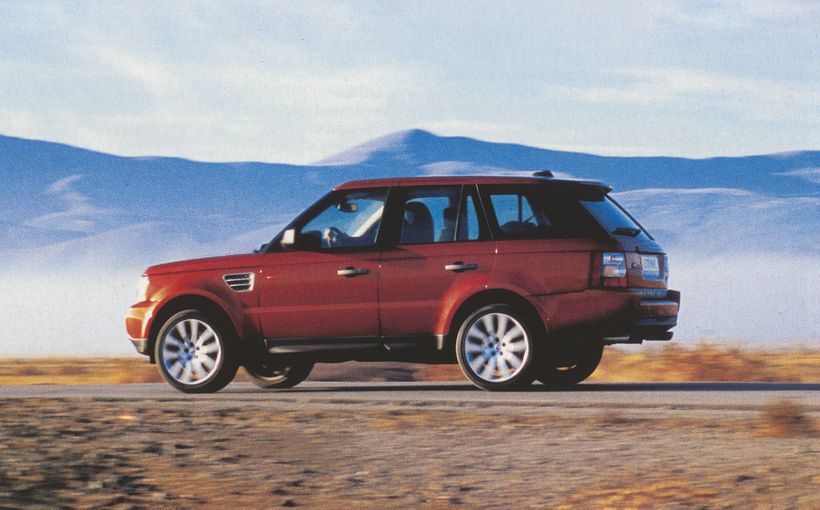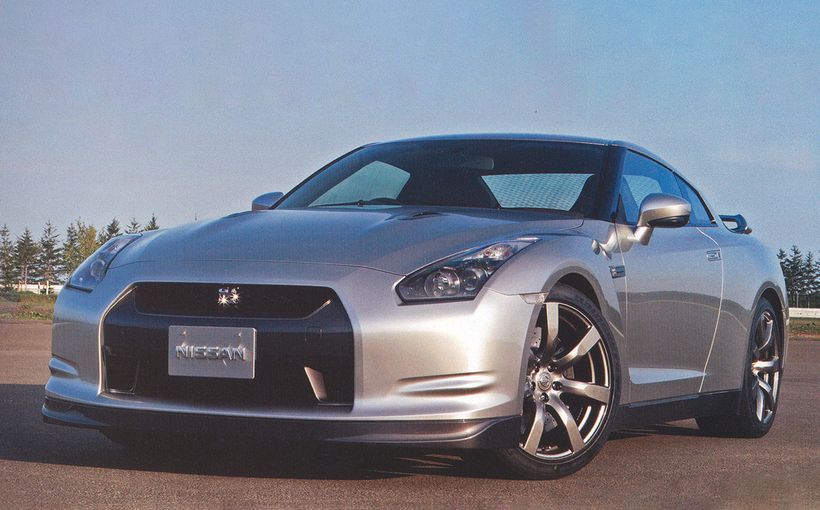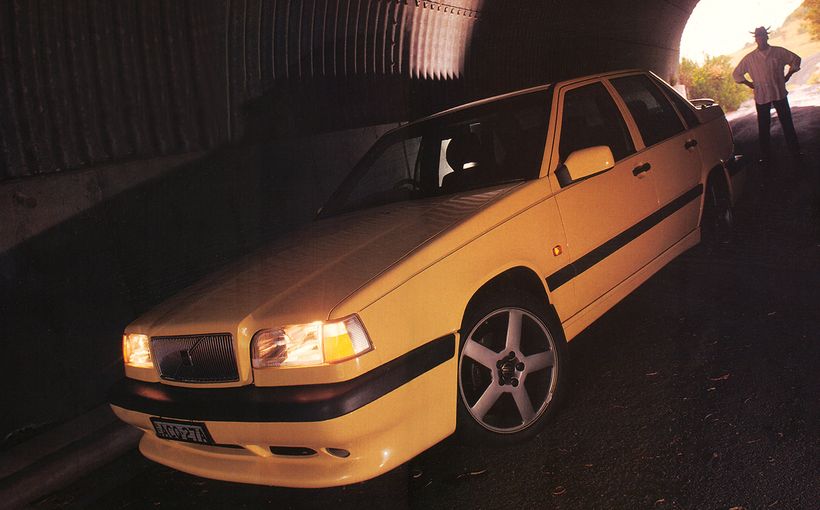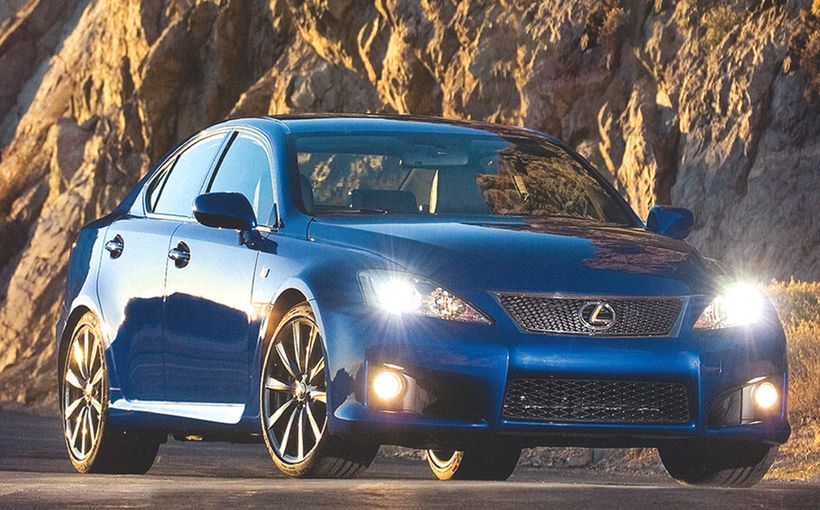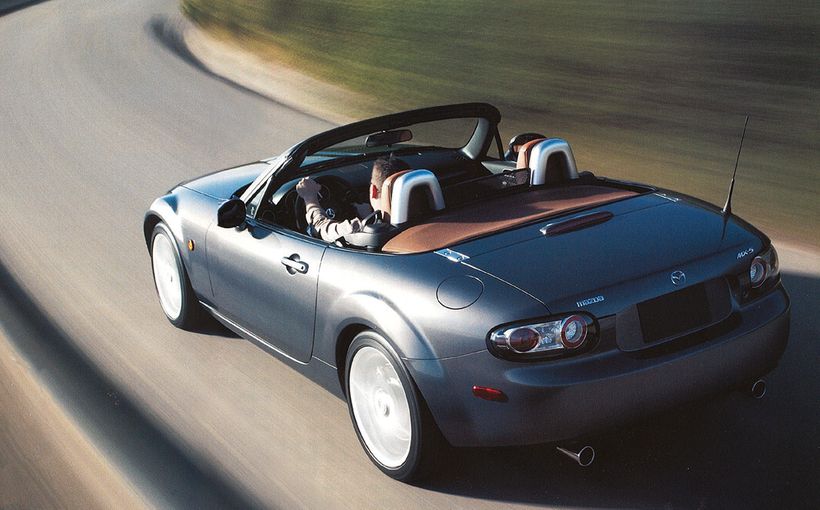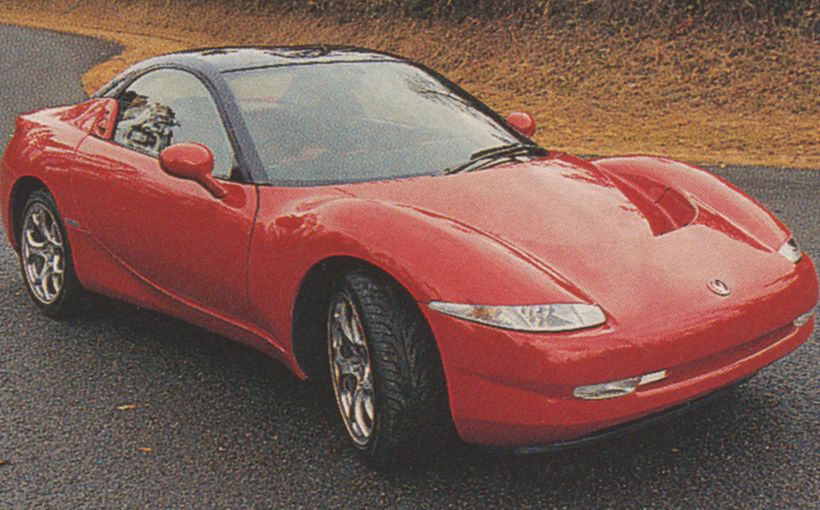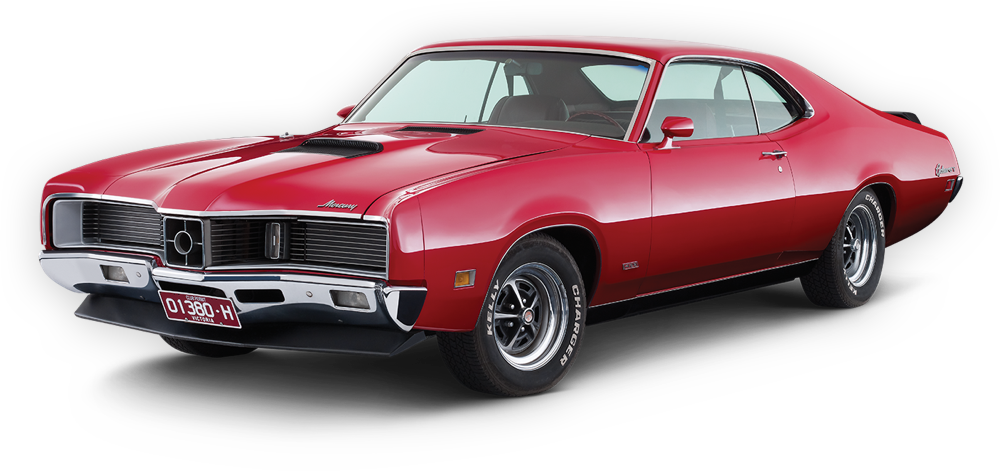
Almost a kilometre away, the Panoz Esperante appears over the gentle rise on the test track's wide straight and spears towards us, pursued by the howl of its NASCAR V8.
Head on, it rapidly resolves into a catamaran-like shape, the guards arching abruptly either side of a pointed nose. Then it's arcing by into the turn at the straight's end, showing a profile that's low, laid-back, curvy, lean and retro.
If you haven't heard of Panoz, you soon will. If you have heard of it, you've probably marked its car as just another small-time sports car maker lured into GT racing by the dream of a Le Mans victory.
That's only part right. Winning the 24 Hours is the dream ofDon and Danny Panoz, father and son who created Panoz Automotive Developments, but their US-based company is big on quality engineering; its contender isn't a simple muscle car like, say, the Dodge Viper.
Even so, a debut win at the French classic sounds more than far-fetched. No car with the Esperante's front engine/rear-drive layout has won the 24-hour race since the Beatles signed up with EMI in 1962.
And though McLaren's F1 scored a rookie win in '95 and the Porsche 911 GT1 nearly did the same last year, both those companies know or plenty about racing. Panoz knows diddly-squat.
But luckily for Panoz, you can't say the same of Reynard Racing Cars, the company which designed and built the Esperante GTR 1 for Panoz.
It has vast racing experience and an exceptional track record. In every new formula it has entered, the Oxfordshire-based British company has won its first event, and that includes IndyCar. The Esperante may be its first GT and its first front-engined racer, but it doesn't intend to falter now.
On its first proper track test, the Esperante was as quick as last year's pace-setter, the Porsche 911 GT1. One of its designers, John Piper, describes it as "the best front-engined car ever made". No wonder McLaren and Porsche are eyeing the Panoz warily.

The gold Esperante appears down the straight again and rumbles to a halt beside us. It's squat, compact, and unlike any other GT car I've ever seen.
The Porsche and this year's McLaren are cab-forward and long-tailed but the Esperante is the inverse: long-nosed and stubby-tailed, all curves and ducts topped by a smooth bubble cockpit that visually places the weight over the rear wheels. But front to rear, the Panoz's weight distribution is near 50/50.
Why is the Esperante front-engined? With the cooperation of Ford, Panoz already builds a high-quality aluminium-bodied car based on Mustang components in the US. It insisted that, like them, the racer should be powered by a Ford V8 mounted up front. The Esperante was also to have been constructed from aluminium, but Reynard persuaded Panoz that carbon-fibre was the way to go. With these basic building blocks, Reynard's designers began sketching on the F1ight back from the Panoz factory in Georgia.
Twelve months later, the sixth Esperante is in build and this road car is cycling through a homologation program en route to full type approval. Don't be fooled by the retro styling. Its body and monocoque are carbon-fibre, just like the McLaren F1's, and although it's powered by a two-valves-per-cylinder pushrod V8 (that sells for 3000 bucks in the States, according to Adrian Reynard), the layout that lurks beneath is anything but traditional.
Reynard describes the Esperante as front mid-engined, and when the bonnet is coaxed off, you can see why. Beneath is a structure that's unlike any other road car's. The 5.9litre V8 is mounted well behind the front axle line and ahead of it is what looks like the naked front end of an F1 car. In fact, it borrows heavily from Reynard's IndyCar experience.
The slim, aerodynamic wishbones and crank-operated springs and shock absorbers are mounted on a carbon-fibre carrier, and a carbon nosecone completes the effect. It's like opening up an old valve radio and finding a Pentium processor inside.
To improve weight distribution further, the clutch and Xtrac sequential gearbox are at the rear, forming a (magnesium-cased) transaxle. This is rigidly connected to the engine by a carbon-fibre torque tube, and the IndyCar-derived rear suspension picks up on the transaxle.
The driver plays his part, too: "The limiting factor on how far back we could site him was dictated by how close we could get his left bum cheek to the rear wheel," says Piper. Apparently, the drivers who have sampled the Esperante liked being so close to where the power is going down. In a mid-engined design, the driver is much further away, helping weigh down the nose, and thus can't feel as much.

Time to find out. Duck beneath the beetle wing door and stretch over the broad sill, trying to ease in rather than nosedive onto the centre console.
Take stock. It feels snug, very low. The high front wings are just below eye level and you'd hardly guess there was a burly V8 buried somewhere between them. Jobbing stylist Peter Stevens drew the interior and it's a tasteful fusion of matt aluminium and tan leather.
Ford knobs and switches look like an afterthought and contrast starkly with the Nardi three-spoke wheel and gearlever. I'm not sure I'd be that impressed if I were one of the 20 or so buyers Panoz reckons will part with almost A$1.2 million, but this isn't the finished item, remember.
Panoz will offer a sequential manual gearbox - a first on a road car - but this example makes do with a straight cut, racing version, complete with an on/ off clutch that would tax Arnie's left thigh. Between the rev-counter and speedo there's a row of lights like a tiny dragstrip Christmas tree that indicates which gear you're in, the bottom three gears yellow, the top three red, plus green for neutral. Fire up, tap the gearlever into first, rev up, and whooooaa!- we're off.
Into second and then third -just a slight lift between tugs of the lever, no clutch needed – and the Flavour of the Esperante starts to Flow through. It feels quick but relaxed, solid and stable. The race car's Roush-tuned V8s will rev to 7200rpm. But the road car's 261kW version has done its best work by 5500, which contributes to the car's loping, unstressed feel.

In no time the sixth- gear indicator is lit and the car is pushing 6000rpm and 273km/h. There's so much torque and the straight is so wide, you start thinking that if it had seventh and eighth gears, it'd pull 'em.
Nudge the gearlever forward a couple of times in unison with a quick stab of the clutch and blip of the throttle, and the Esperante peels into comers positively but without any unsettling weight shift.
The wheel writhes a bit as the fat 235/45ZR18 Goodyears hit ridges, but it's comfortably weighted though unassisted.
Although the chassis hasn't been set up yet, one thing is abundantly clear: it has extraordinary traction and grip. Carry more speed into the next tum, get on the power even earlier and you feel you're no nearer to breaking traction. Push harder and the Panoz pushes harder back, and you can keep on edging up on the limit because you're so close to what's going on, you can feel just when the tyres are about to slide.
The worry that when the Goodyears do let go, the car will spin like a top is not borne out; the tail eases out progressively enough for you to either hold it out there with the throttle or back off fractionally until you feel the tread regain its hold.
Swap the treads for slicks, add a rear wing, bump the power up to 447kW and you've got the racer.
If the Panoz wins at Le Mans, it will be 35 years since the previous front-engined car, the Hill/Gendebien Ferrari 330LM, did the same. But Reynard's car has a better chance than most would have believed possible.
Four will be run by the high-calibre teams of Dave Price Racing and DAMS, and seasoned campaigner Andy wallace will certainly shorten the odds.
But only one thing is for sure: after Le Mans, a lot more people will know of Panoz.
Go Back in time with the Wheel Archive. Get FREE access to 5 years of Wheels archive content now! 
Protect your Classic. Call Shannons Insurance on 13 46 46 to get a quote today.



